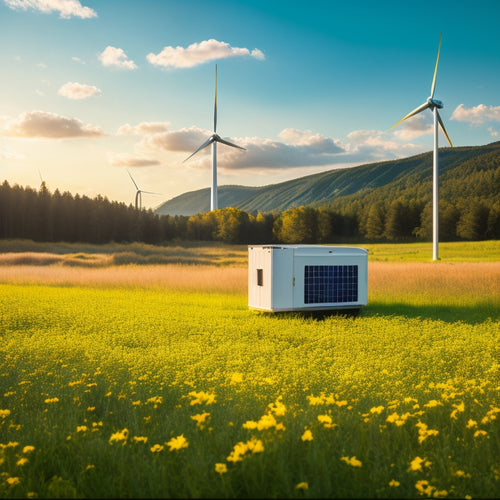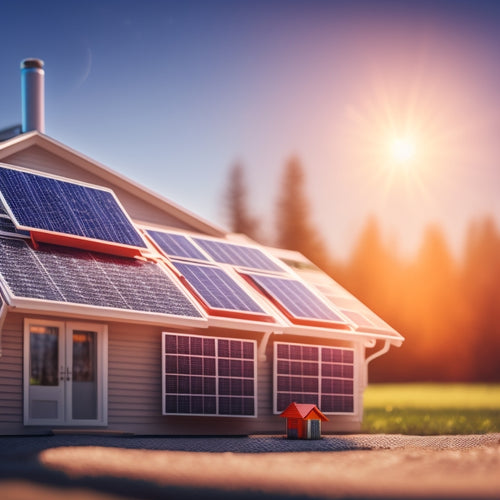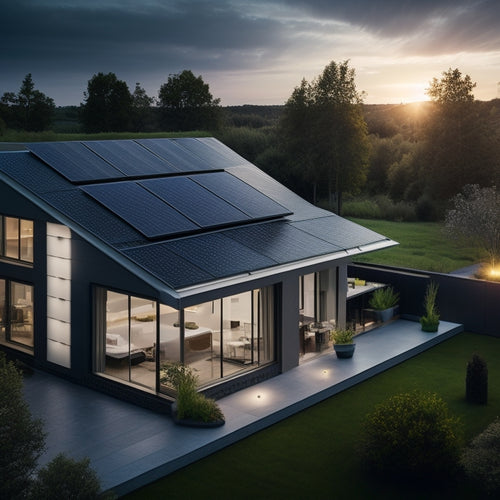
Essential Backcountry Water Treatment Techniques
Share
To guarantee safe drinking water in the backcountry, you need reliable treatment techniques. Start with portable filtration options like gravity filters or straw filters for easy access to clean water. Consider chemical treatments like iodine or chlorine dioxide for quick disinfection, but remember to follow the wait time for effectiveness. Always assess your water source, as streams may have more contaminants than lakes. Boiling is effective but time-consuming, while UV devices can rapidly eliminate pathogens. Mastering these techniques can enhance your hydration experience, and there's more to investigate about filtration methods and safety.
At a Glance
- Portable filtration options, like straw filters and gravity systems, ensure safe drinking water without adding bulk to backpacks.
- Chemical treatments, such as iodine and chlorine dioxide, provide quick and effective disinfection for various water sources.
- UV purification devices rapidly eliminate pathogens, making them ideal for immediate access to clean water in the backcountry.
- Testing water sources is crucial to identify contaminants, with clear streams generally being safer than murky ones.
- Durability, weight, and maintenance of filtration systems are vital for reliable performance during remote expeditions.
Portability for Remote Adventures
When you're heading into remote areas, lightweight filtration options and compact purification solutions are vital for keeping your pack manageable.
Effective solar water purifiers, which employ UV-C LED technology for pathogen removal, can guarantee that you have access to safe drinking water without adding unnecessary weight.
You want gear that won't weigh you down but still assures safe drinking water.
Let's investigate the best portable methods to keep you hydrated on your excursions.
Lightweight Filtration Options
Choosing the right lightweight filtration option can make all the difference on your remote excursions. When you're out in the wild, every ounce counts, so consider portable water bottles with built-in filters. These are great for quick access to clean water without adding bulk to your pack.
Ultralight gravity systems are another effective choice; they let you set up a filtration station with minimal effort, allowing you to rest while the water filters itself.
For those seeking ultra-compact solutions, compact water straws are a transformative option. Just dip and sip, making them perfect for spontaneous hydration.
If you want added versatility, collapsible filtration bags can hold larger volumes of water, providing emergency water solutions when needed most.
Don't overlook advanced membrane filters either, which offer superior filtration without burdening you. Pair these with sustainable filtering methods to guarantee you're protecting the environment while enjoying your escapades.
Compact Purification Solutions
Compact purification solutions are vital for staying hydrated on remote expeditions. When you're out in the wild, having ultralight gear that packs easily can make all the difference. Compact devices and portable systems not only save space but also improve your outdoor experience with their efficiency features. Whether you're hiking or camping, these innovations guarantee you have access to safe drinking water without the bulk.
Here's a quick comparison of some compact purification options:
| Device Type | Key Features |
|---|---|
| Straw Filter | Lightweight, drink directly from source |
| UV Purifier | Fast purification, battery-operated |
| Pump Filter | Versatile, can filter larger volumes |
| Chemical Tablets | Portable, no equipment needed |
| Gravity Filter | Efficient for group use, easy setup |
Choosing the right solution contributes to your hiking safety and travel convenience. With these outdoor essentials, you can investigate freely, knowing you have reliable water treatment at your fingertips. Accept camping innovations that allow you to focus on your journey, rather than worrying about hydration.
Healthier Hydration Options Available
When you're out in the backcountry, having reliable hydration options is essential for your health.
You'll want to take into account both filtration methods and chemical treatment options to guarantee your water is safe to drink.
Solar-powered water purifiers can be an effective solution, particularly in remote areas where traditional power sources are unavailable, as they harness solar energy for effective purification.
Additionally, UV technology in these systems eliminates 99.9% of bacteria and pathogens, providing peace of mind regarding waterborne illnesses.
Let's examine these techniques to help you stay hydrated and healthy during your excursions.
Filtration Methods Overview
Effective water filtration is essential for guaranteeing safe hydration in the backcountry. You've got several options to choose from, each with its pros and cons. Understanding these can enhance your outdoor safety and emergency preparedness.
Here's a quick overview of popular filtration methods:
| Method | Key Features | Maintenance Tips |
|---|---|---|
| Gravity Filters | Easy to use, no pumping required | Regularly clean membranes |
| Pump Systems | Fast flow rate, versatile | Check seals and hoses often |
| UV Purification | Kills pathogens using light | Verify batteries are charged |
| Membrane Tech | Removes particulates effectively | Replace filters as needed |
When you're out there, make a point to conduct water testing when possible. This not only assures clean drinking water but also helps you understand your gear maintenance needs. By incorporating these filtration methods, you can enjoy your escapades with confidence, knowing you've got a reliable hydration strategy. Choose the right option for your excursion, and stay free and hydrated!
Chemical Treatment Options
Chemical treatment options offer a reliable way to purify water in the backcountry, especially when other methods aren't feasible. These techniques utilize chemical reactions to eliminate pathogens, ensuring your hydration source is safe. Commonly used chemicals include iodine and chlorine dioxide, both known for their treatment effectiveness against viruses and bacteria.
When using iodine tablets, you'll need to wait at least 30 minutes for the chemical reactions to fully take place, ensuring that the water is treated effectively. Be mindful of dosage; too little mightn't eliminate all contaminants, while too much can lead to adverse health effects.
Chlorine dioxide, on the other hand, typically requires a longer wait—around four hours—but it's effective against a broader range of pathogens.
Always check the manufacturer's instructions, as they provide critical information about dosage and waiting times. Additionally, consider your own health; those with thyroid issues should avoid iodine.
Welcome the freedom of exploring the backcountry while ensuring safe hydration. With the right chemical treatment options, you can confidently tackle any journey with clean, drinkable water at your side.
Key Characteristics of Systems
When selecting a water treatment system, it's vital to understand the key characteristics of filtration methods and chemical treatments. Each option has its strengths, affecting how quickly you can purify water and the types of contaminants you can eliminate.
For instance, solar-powered purification systems provide an efficient way to guarantee reliable clean drinking water even in remote areas, making them an excellent choice for backcountry excursions.
Knowing these details will help you choose the best system for your backcountry journeys, especially when considering the benefits of sustainable water management.
Filtration Methods Overview
Understanding the various filtration methods is essential for ensuring safe drinking water during your backcountry excursions. Filtration systems come in several types, each designed to meet different needs and preferences.
One popular option is gravity systems, which use the natural force of gravity to pull water through a filter. These systems are often user-friendly and can handle larger volumes of water, making them ideal for groups.
If you're relying on backcountry reservoirs, look for filters that effectively remove bacteria and protozoa, as these are common contaminants in natural sources.
Portable pump filters are another option, offering versatility and the ability to treat water on-the-go. While they require a bit more effort, they're great for ensuring you have access to clean water whenever you need it.
Ceramic filters offer another effective method, providing durability and long-lasting performance.
Finally, consider the size and weight of your filtration system, as you'll want something that fits seamlessly into your backpack without adding much bulk.
Chemical Treatment Options
For those venturing into the backcountry, chemical treatment options provide a reliable way to purify water. Two popular choices are iodine tablets and chlorine dioxide. Both methods are lightweight and easy to pack, making them perfect for your outdoor escapades.
Iodine tablets are effective against bacteria and viruses, but they require a wait time of about 30 minutes before the water is safe to drink. Keep in mind that iodine can leave an aftertaste, and it's not recommended for pregnant women or those with thyroid issues.
On the other hand, chlorine dioxide is a powerful disinfectant that works against bacteria, viruses, and protozoa. You'll typically need to wait around four hours for complete purification. Unlike iodine, chlorine dioxide doesn't leave a strong taste, making it a favored choice among many backcountry enthusiasts.
When choosing between these options, consider your specific needs and the water sources you'll encounter. Both iodine tablets and chlorine dioxide offer convenient solutions to guarantee you stay hydrated and healthy while embracing the freedom of the wild.
Always follow the instructions carefully for the best results.
Selecting Based on Water Source
When you're out in the backcountry, the type of water source you encounter greatly influences your treatment methods. Stream water often contains more sediment and potential contaminants, while lake water may require different filtration techniques due to its depth and stagnation.
Understanding these differences will help you choose the right treatment system for safe drinking water. Additionally, just as solar energy can provide reliable power in rural communities, proper water treatment is essential for ensuring health and wellbeing in remote areas, especially where access to clean water is limited energy access and community impact.
Stream Water Considerations
Choosing the right stream for water sourcing can greatly impact your backcountry experience. Start by evaluating the stream flow; faster currents often indicate better water quality due to natural filtration.
Pay attention to seasonal variations, as runoff can heighten contamination risks during spring melt or heavy rainfall.
Examine the surrounding vegetation—dense plant life can filter out impurities and reduce sediment levels. However, be cautious of wildlife impact; streams near animal trails or nesting areas may carry harmful bacteria or parasites.
Consider water temperature, as cooler waters tend to signify fresher sources. Warmer streams, especially in stagnant areas, may harbor harmful microorganisms.
Observe sediment levels; clear water is generally safer than murky, sediment-filled streams.
Ultimately, always prioritize your safety by selecting a stream that minimizes these risks. A thoughtful approach to your water sourcing will boost your freedom and enjoyment in the wild.
Stay informed, and you'll guarantee that your hydration choices support both your well-being and your exploration spirit.
Lake Water Treatment Methods
Selecting a lake as your water source can offer distinct advantages, but it's imperative to assess its quality before diving in. Lakes often provide larger volumes of water compared to streams, but they can also be more prone to contamination from surrounding areas. Start with lake water testing to determine the presence of harmful bacteria, chemicals, or sediments.
Here's a quick comparison of lake water treatment methods:
| Method | Description |
|---|---|
| Boiling | Kills bacteria and viruses; effective but time-consuming. |
| Chemical Treatment | Use purification tablets for quick disinfection. |
| Filtration | Natural filtration systems can remove sediment and improve taste. |
| UV Light | Portable UV devices can eliminate pathogens quickly. |
Consider using natural filtration techniques, like setting up a sand or charcoal filter, to enhance your water's quality. When you're out in the wild, freedom means being prepared. By knowing how to test and treat lake water, you can guarantee a safe, invigorating drink that supports your excursions. Remember, the clearer the water looks, the better your chances—but always test before you trust!
Superior Filtration Efficiency
When you're choosing a filtration method for backcountry water treatment, efficiency is key.
You'll want to compare various filtration techniques to guarantee you're removing harmful pathogens and sediments effectively.
Understanding the strengths and weaknesses of each method can help you make the best choice for your needs.
Filtration Methods Comparison
Filtration methods play an essential role in ensuring safe drinking water during backcountry excursions. Choosing the right system can greatly impact your hydration strategy.
Gravity filters are excellent for groups, allowing you to set up a system and let it work while you focus on other tasks. On the other hand, pump systems offer a more hands-on approach, giving you instant access to filtered water, but can be labor-intensive.
Straw filters provide a lightweight, portable option for solo explorers, allowing you to drink directly from the source. For those seeking superior purification, UV purifiers eliminate pathogens quickly, but you'll need batteries or sunlight to operate them.
Ceramic filters are durable and can be cleaned for long-term use, while activated carbon improves taste and removes odors. Inline filters are perfect for those using hydration packs, integrating seamlessly into your gear.
Ultimately, the best filtration method depends on your specific needs, group size, and the type of water sources you'll encounter.
Frequently Asked Questions
What Are the Signs of Contaminated Water Sources?
When evaluating water sources, look for visual contamination signs like murky water or floating debris. Also, watch for biological contamination indicators such as unusual odors or excessive algae, which can signal potential health risks.
How Often Should I Replace Water Filters?
Did you know a dirty filter can reduce flow rate by 50%? For ideal filter maintenance, replace your water filter every 100 gallons or annually, whichever comes first, to guarantee clean, safe drinking water on your excursions.
Can I Use Chemical Treatments With Other Methods?
Yes, you can combine chemical treatments with other methods to enhance chemical treatment efficacy. This approach maximizes your water purification, ensuring you stay safe and free in the backcountry while enjoying your escapades.
What Is the Shelf Life of Water Purification Tablets?
You might think water purification tablets last forever, but they actually have a shelf life of about five years. Beyond that, their effectiveness decreases noticeably, so check expiration dates before your next excursion!
Are There Any DIY Water Purification Methods?
Yes, you can purify water at home! Boil it for at least one minute, or use solar disinfection by filling clear bottles and leaving them in direct sunlight for six hours. Enjoy safe hydration!
Explore More
When you're out in the wild, clean water isn't just a luxury—it's a necessity. By understanding your options and selecting the right treatment technique, you can guarantee every sip is safe and invigorating. Whether you're hiking through rugged terrain or camping by a serene lake, having the right gear means you can focus on the escapade, not the worry. So, gear up, drink up, and let nature's beauty fuel your expedition!
Related Posts
-

Sustainable and Eco-Friendly Generators for a Reduced Carbon Footprint
Sustainable and eco-friendly generators are perfect for cutting your carbon footprint and increasing energy efficienc...
-

A Beginner's Guide to Navigating the Solar Investment Tax Credit
You're eligible to claim a significant Solar Investment Tax Credit (ITC) of 30% of total installation costs, but mane...
-

Home Solar Battery
You're opting for a home solar battery that allows you to utilize the power of the sun during the day and use it at n...


